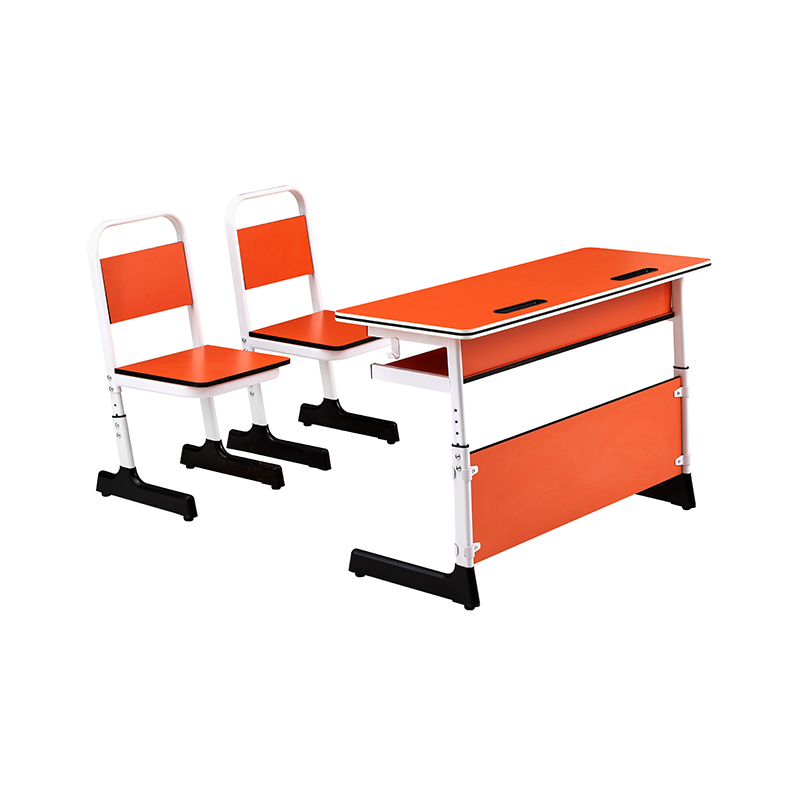How To Keep Student Desks From Moving
Student desks naturally shift during daily classroom activities, especially when students lean, write, or adjust their sitting positions. Over time, this constant movement can disrupt classroom layout, create noise, and even affect safety. This article explains practical ways to keep student desks stable and secure, with solutions that align with the classroom furniture offered by OUHE, whose desks and chairs are designed for balanced structure and reliable floor grip.
Why Student Desks Move Easily
Movement typically occurs because students apply forward or lateral pressure on the desk, or because the floor surface is smooth, creating minimal friction. Lightweight furniture can also slide more easily, especially when students enter and exit their seats frequently. OUHE desks address this issue with stable metal bases and balanced weight distribution, but additional solutions can further enhance stability depending on the classroom environment.
Methods for Keeping Student Desks From Sliding
Reducing desk movement combines design-related solutions with practical add-ons. The following approaches are effective in both new and existing classrooms:
1. Use Non-Slip Foot Pads
Non-slip rubber pads significantly increase grip between desk legs and the floor. They are simple to install and reduce both sliding and noise. OUHE desks are compatible with various pad sizes, making them ideal for schools that want additional stability without modifying furniture frames.
2. Add Floor-Friendly Grippers
Grippers are slightly thicker than basic pads and work particularly well on tile or polished floors. They create a cushion that absorbs pressure and reduces the impact of sudden movements. These work especially well with adjustable OUHE desk legs that maintain consistent ground contact.
3. Arrange Desks in Linked Rows
Connecting desks with side links or brackets reduces overall movement by forming a shared structure. When arranged in pairs or clusters, the weight distribution improves dramatically, which helps keep each desk in position. This method is popular in classrooms that regularly maintain fixed seating layouts.
4. Utilize Desk Frames Designed for Stability
Desks with wide metal bases offer better floor contact and lower centers of gravity. OUHE classroom desks are engineered with stable U-shaped or T-shaped frames that resist tipping and sliding, offering schools long-term stability without accessories.
5. Apply Classroom Floor Mats in Key Areas
Rubber mats or carpet squares can be strategically placed under desks in areas that are particularly slippery. They also improve noise control and protect the floor. This method works especially well in lower-grade classrooms where students move more frequently.
6. Regularly Adjust and Maintain Desk Feet
Worn or uneven desk feet contribute heavily to instability. Checking and replacing foot caps ensures even weight distribution. Because OUHE desks use durable protective feet, replacements are straightforward when needed.
Additional Techniques That Help Improve Desk Stability
Some classrooms combine preventive strategies with layout adjustments to further reduce movement. For example, placing desks near walls or heavy furniture reduces sliding range and creates natural barriers. Teachers may also incorporate predictable seating patterns that align heavier or more active students with sturdier desk models. OUHE offers various pairings of desks and chairs, allowing schools to match seat weight with desk stability effectively.
In classrooms where group activities are common, using cluster formation locks desks into shared positions. This method works particularly well with rectangular desks that align tightly without gaps.
Common Questions About Desk Stability
1. Do heavier desks move less than lightweight desks?
Generally yes. Heavier frames resist sliding better, but weight alone does not guarantee stability. Foot design, pads, and frame structure matter just as much.
2. Are adjustable desks more likely to move?
Not when designed properly. OUHE adjustable desks maintain strong structural support and secure leg fittings that ensure stability across all height settings.
3. Can using rugs or carpets damage the desk?
No. They usually help protect both floors and desk legs. Just ensure the rug does not cause uneven balance.
4. Does student behavior affect desk stability?
Active students may push desks more, so pairing them with desks that have wider bases or rubber pads can reduce movement.
5. Is it better to connect desks together?
For classrooms needing consistent layouts, connecting desks is highly effective. For flexible classrooms, non-slip pads may be a better solution.
Conclusion
Keeping student desks from moving enhances classroom safety, organization, and comfort. With the help of non-slip accessories, strategic layout planning, and stability-focused desk designs, schools can maintain a cleaner learning environment. OUHE Classroom Desks And Chairs provide solid structural support and flexible configurations, offering schools long-lasting stability solutions. By combining the right furniture with practical adjustments, sliding desks become significantly easier to control, creating a classroom where students can focus on learning without unnecessary distractions.
Previous:




